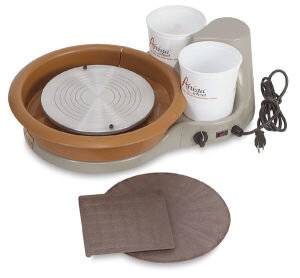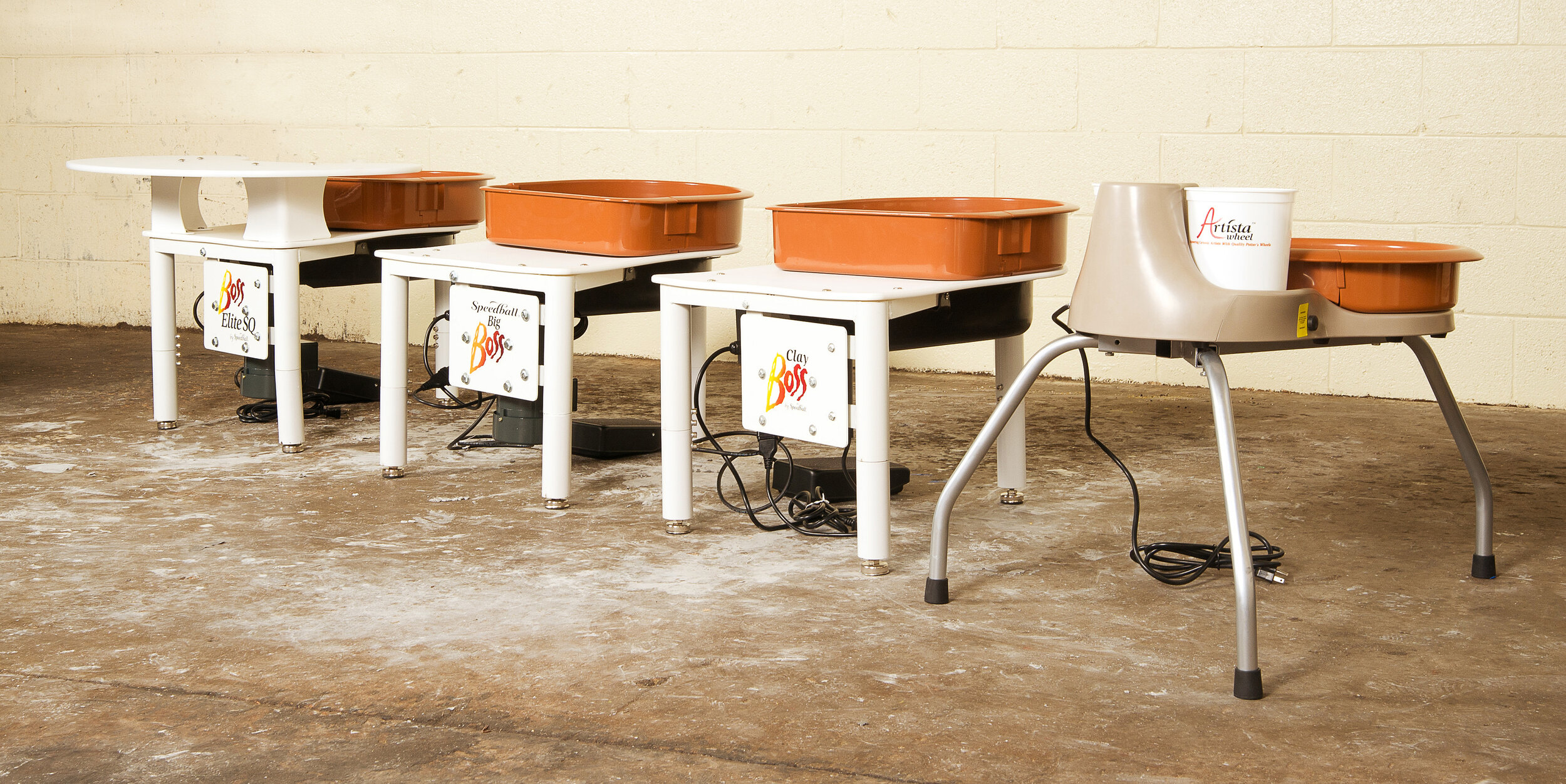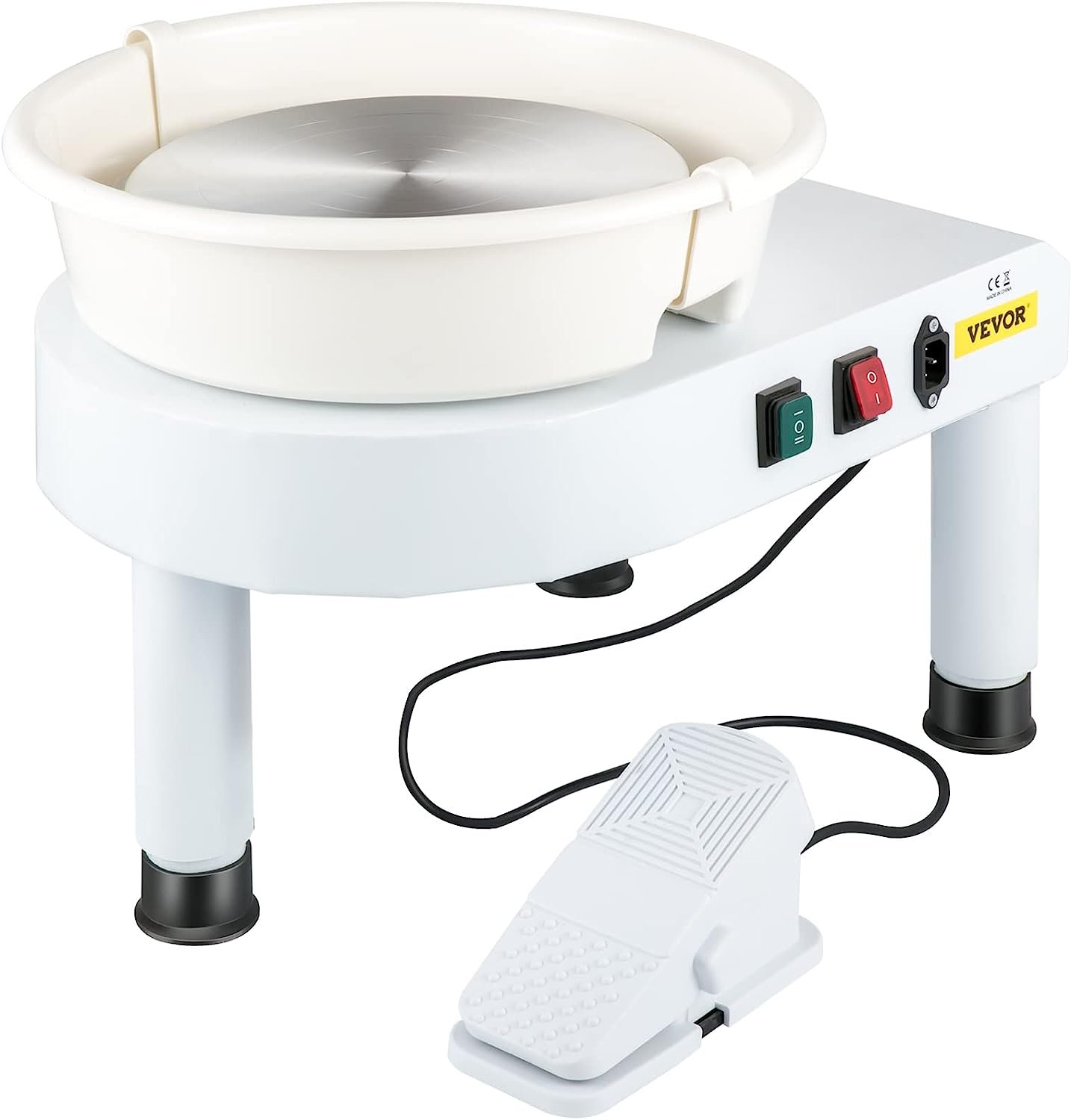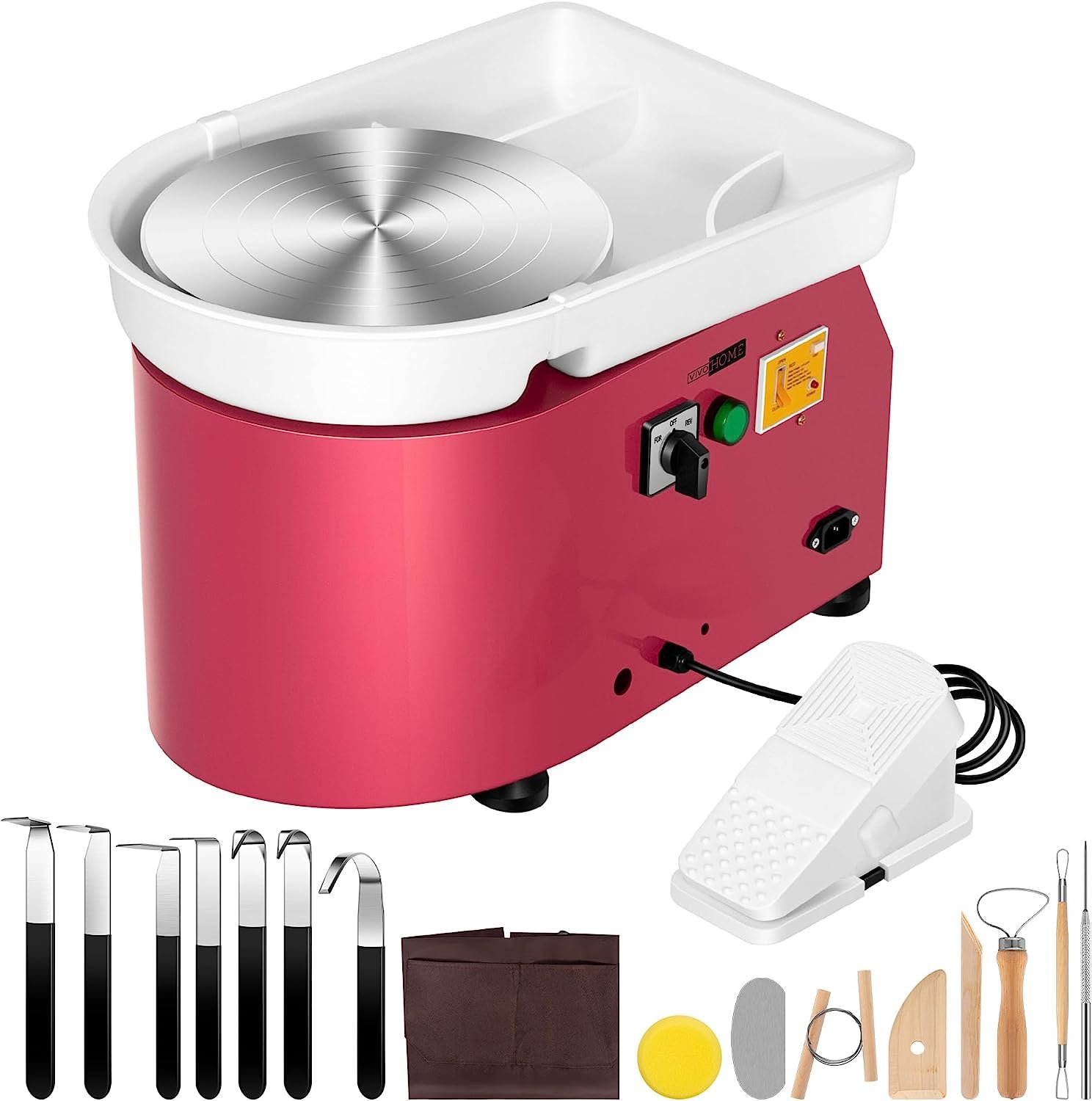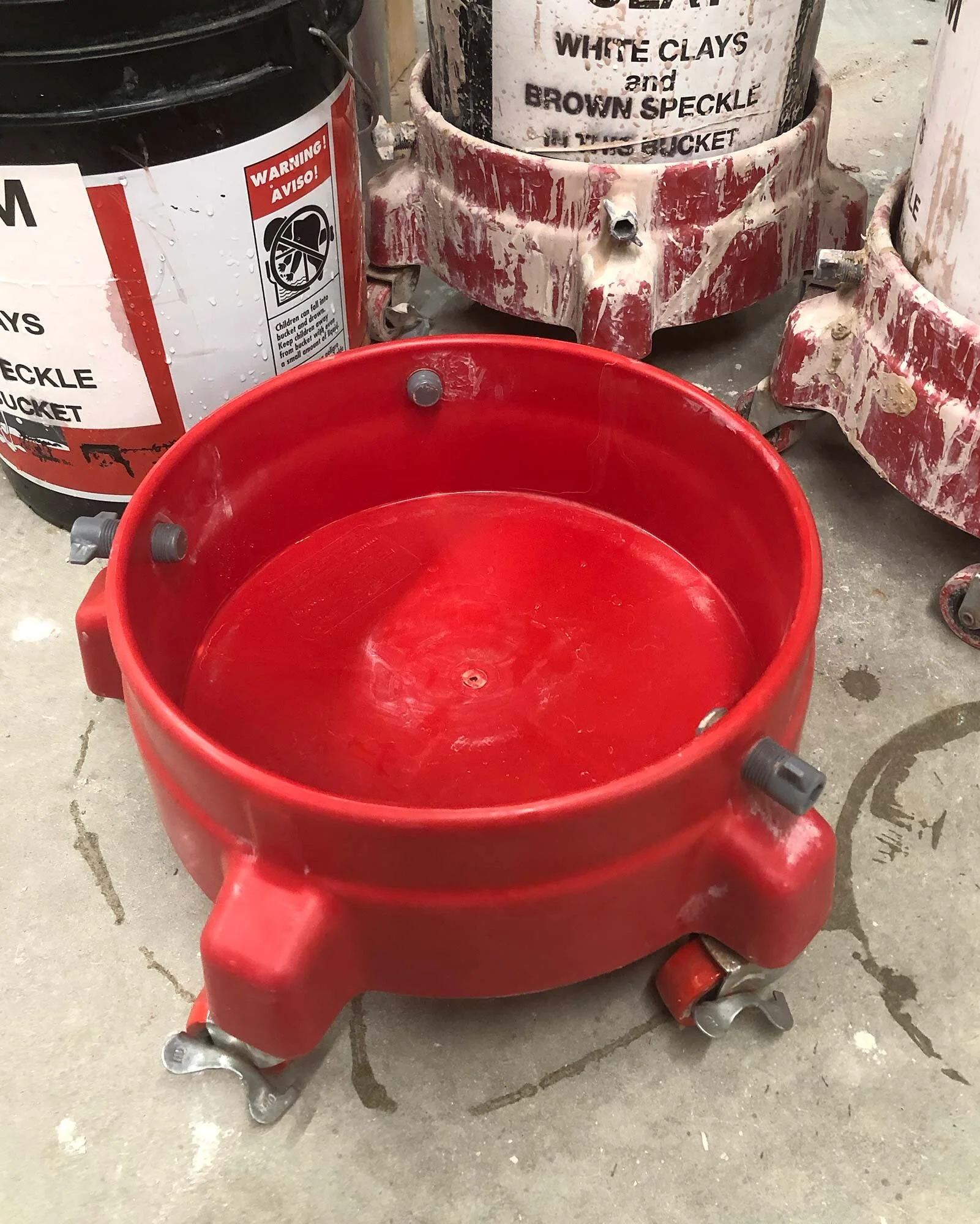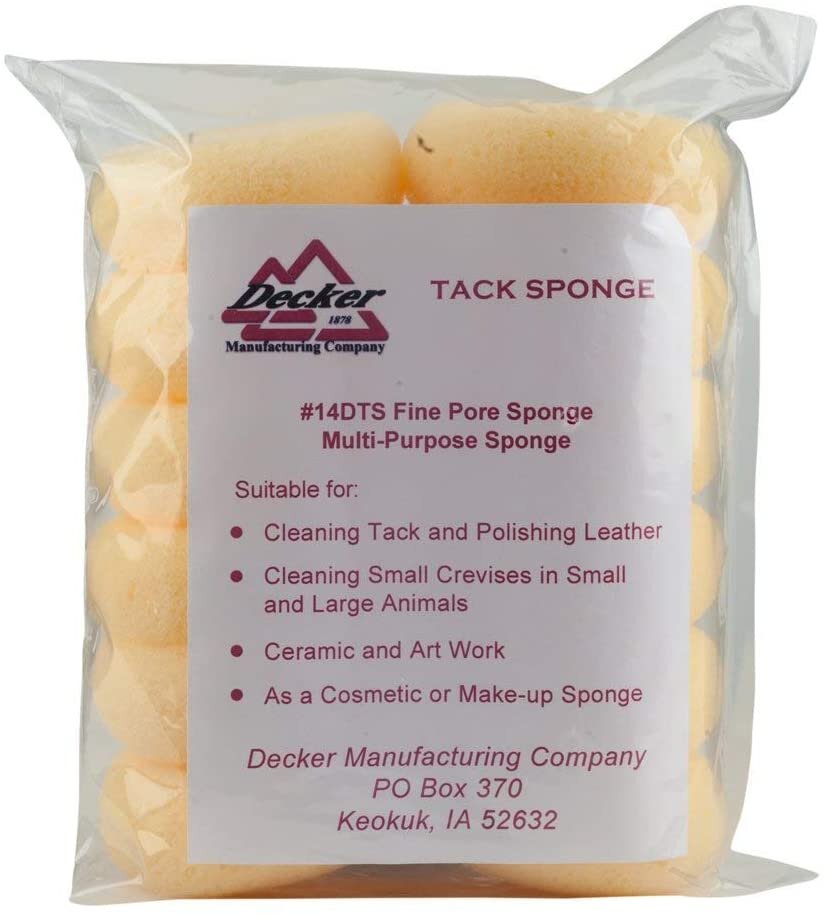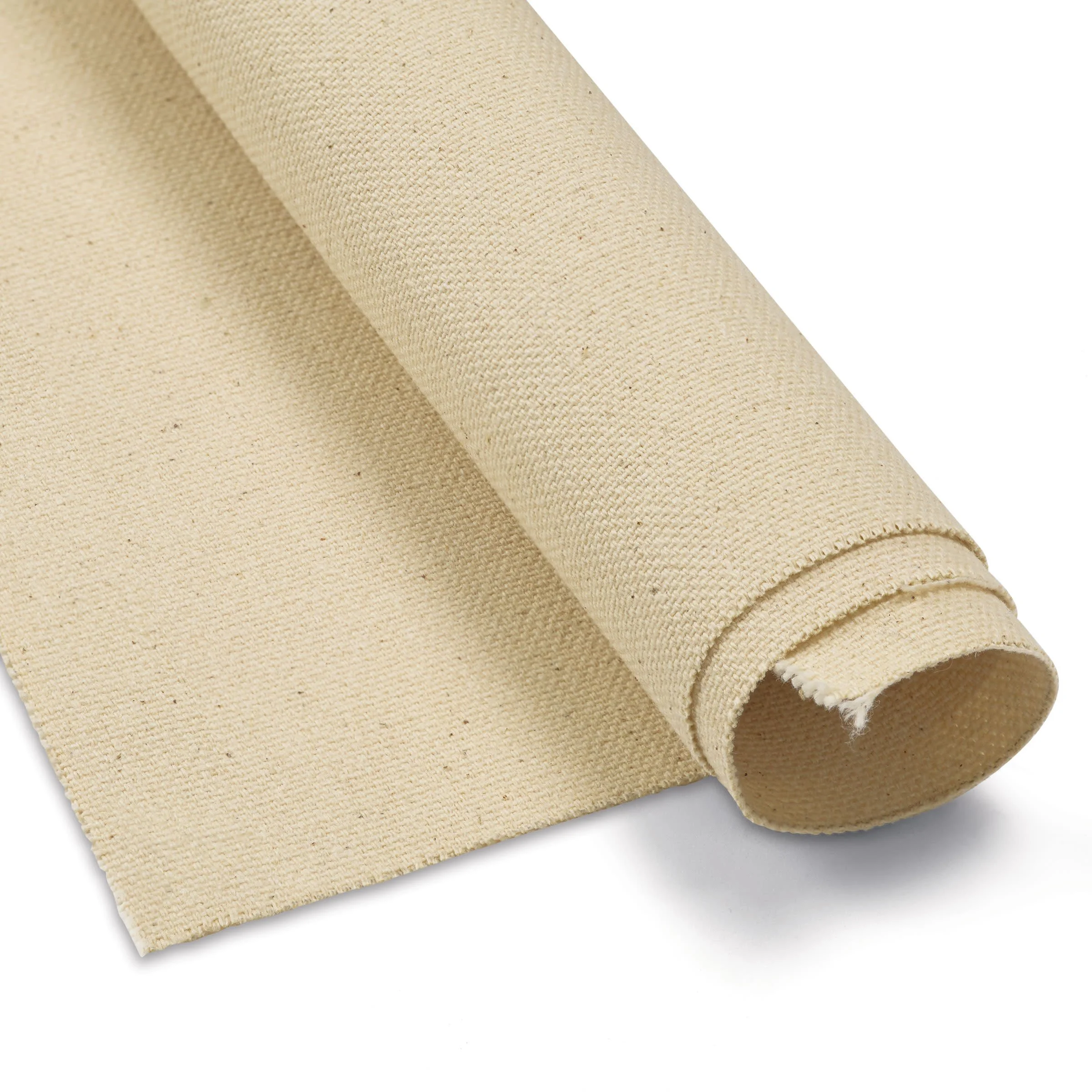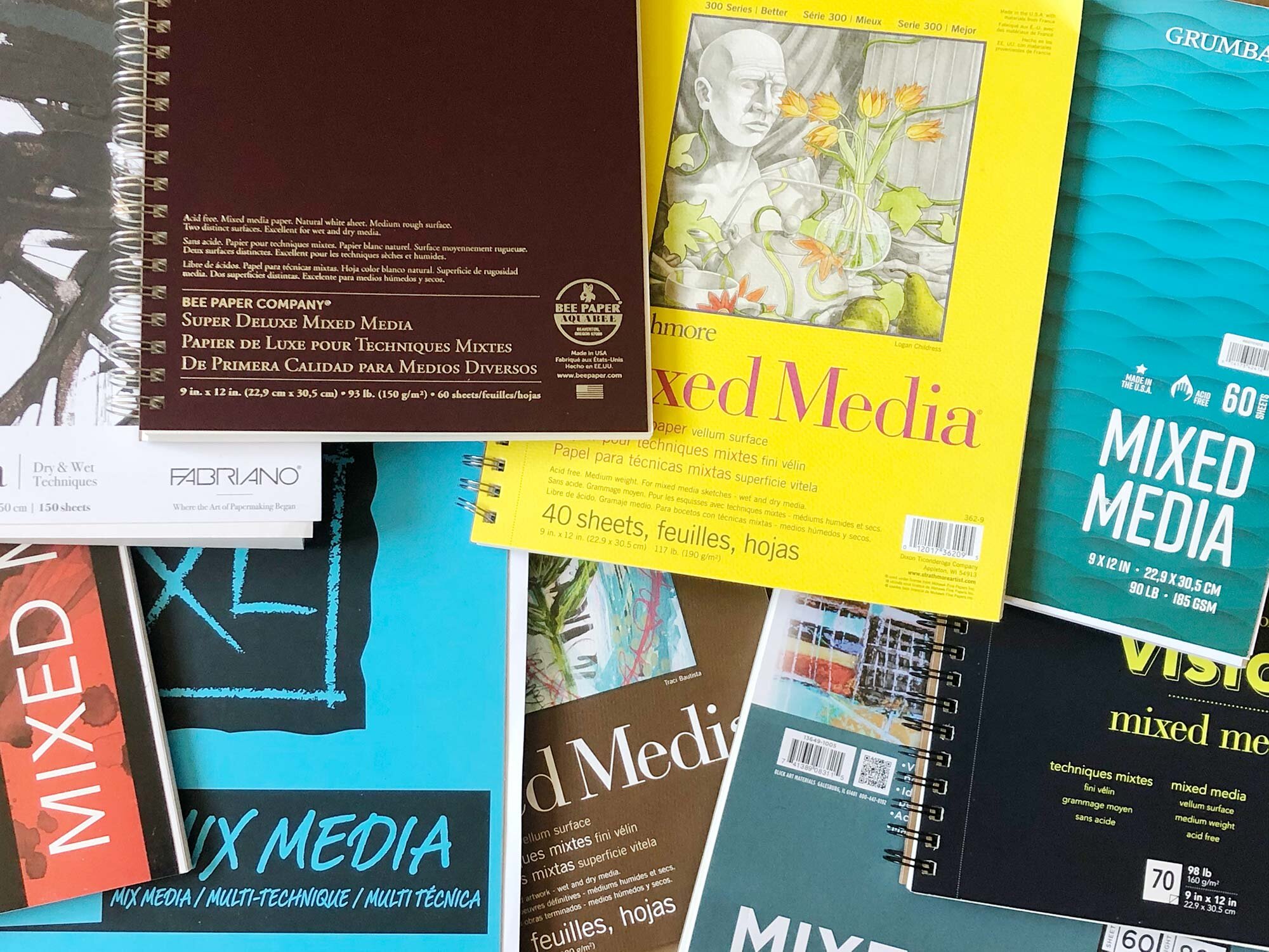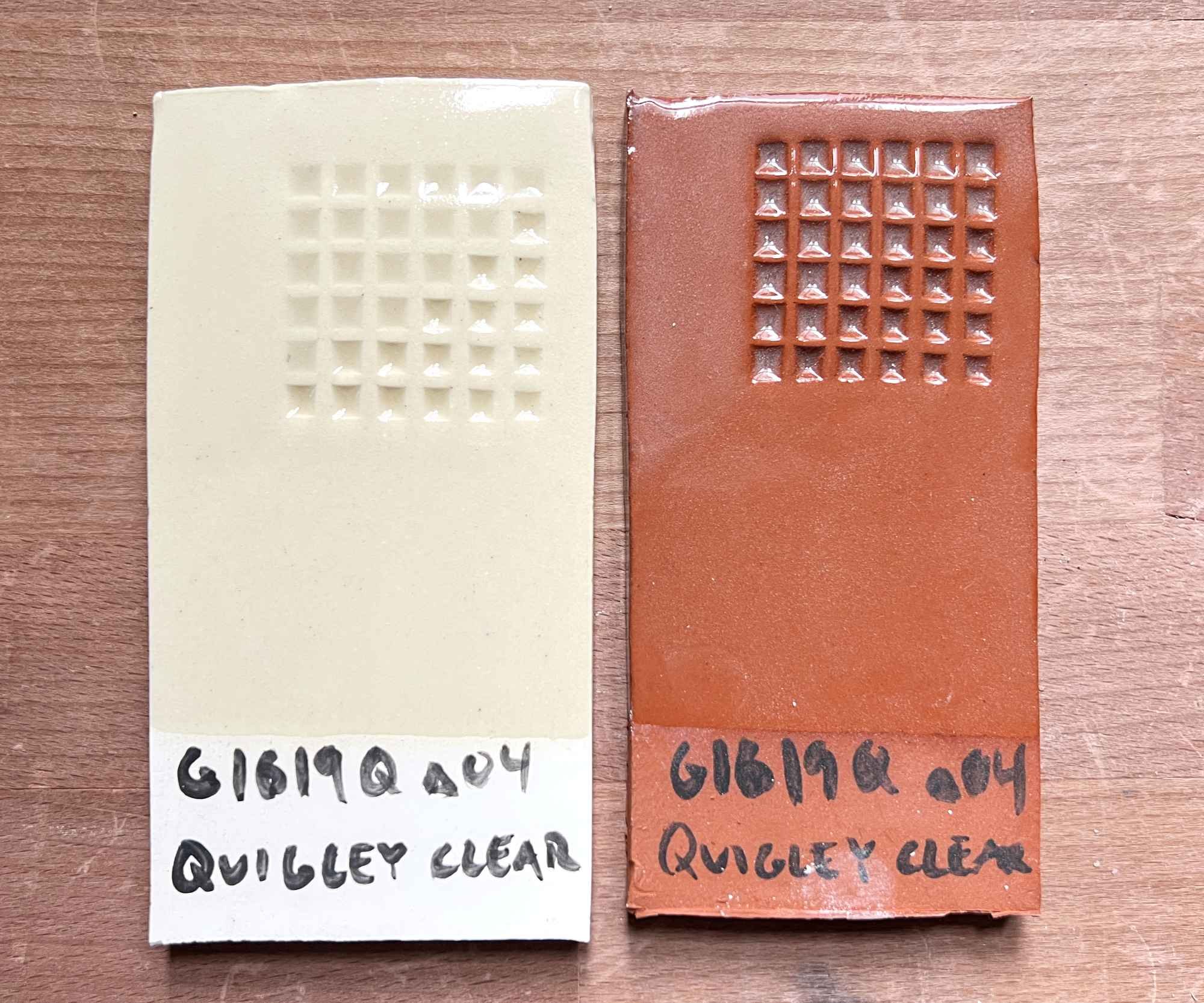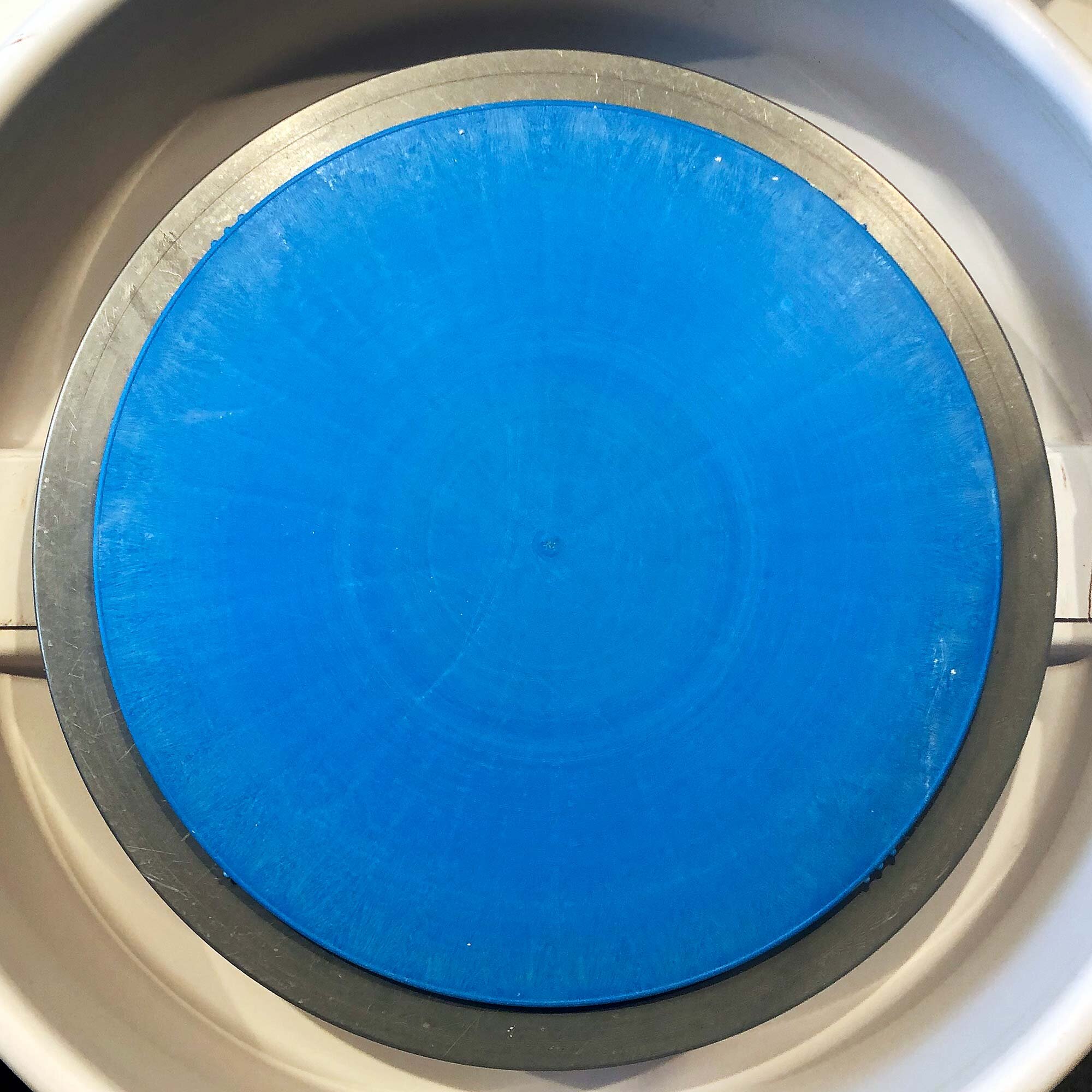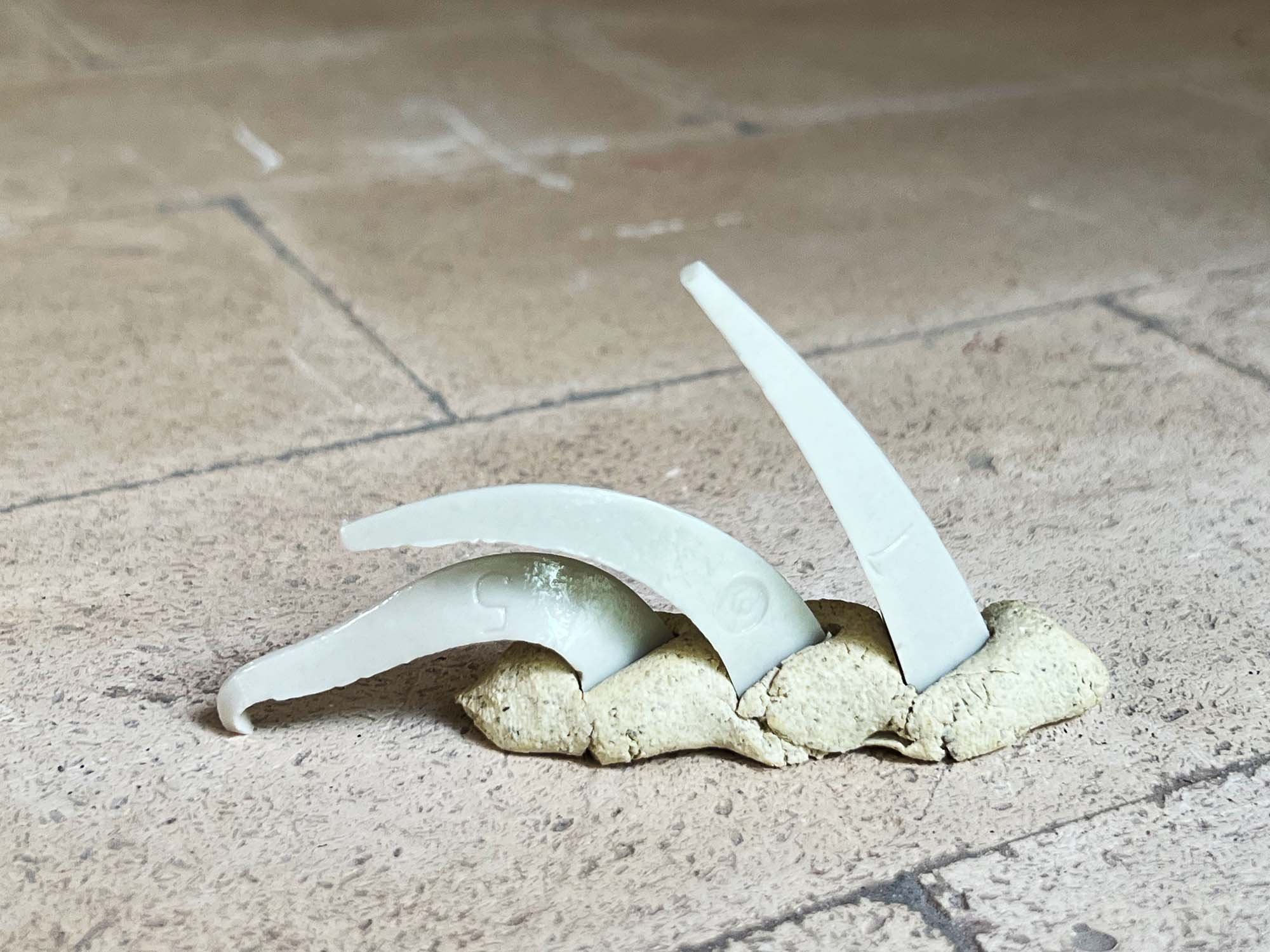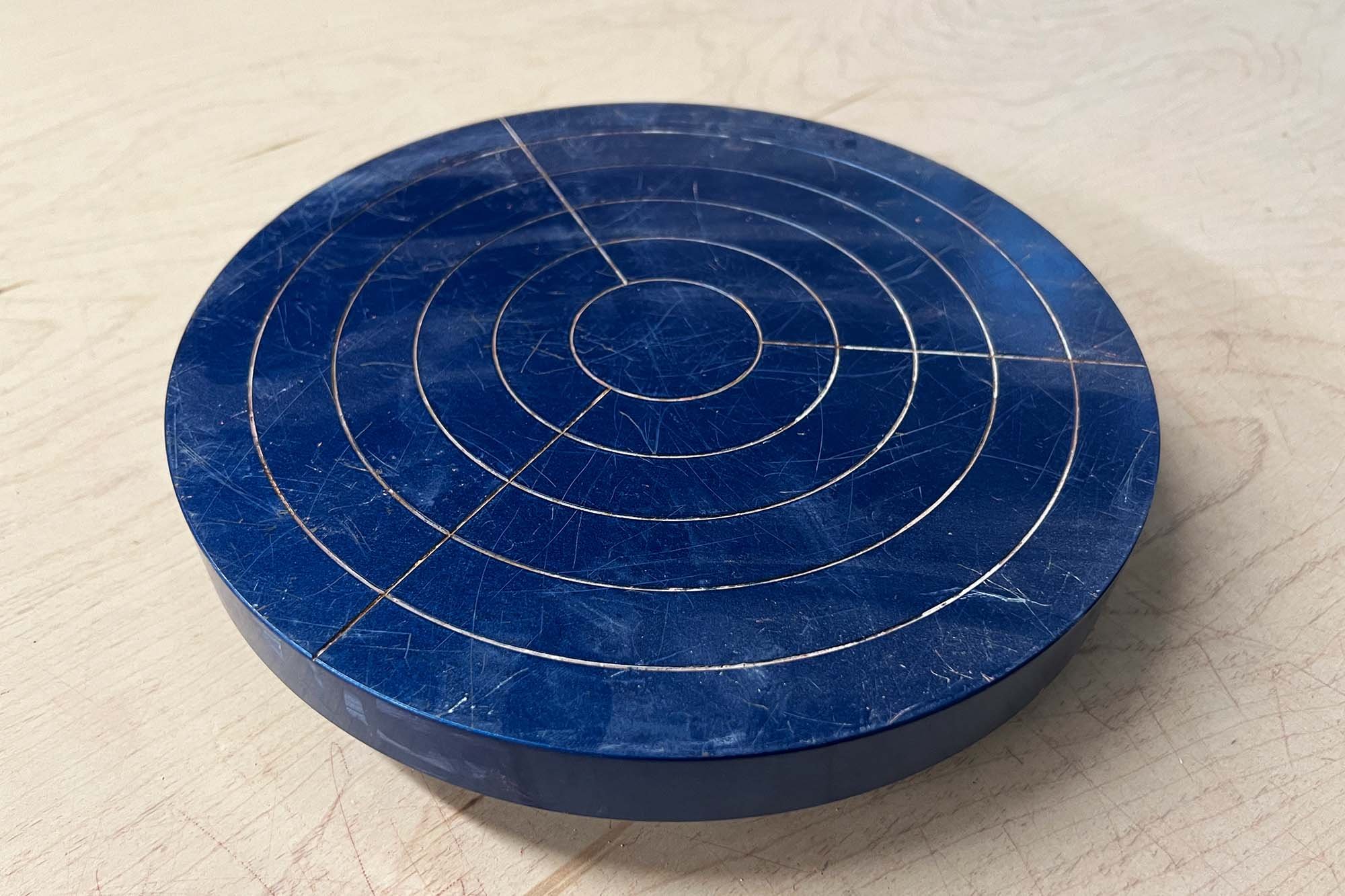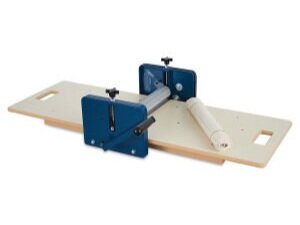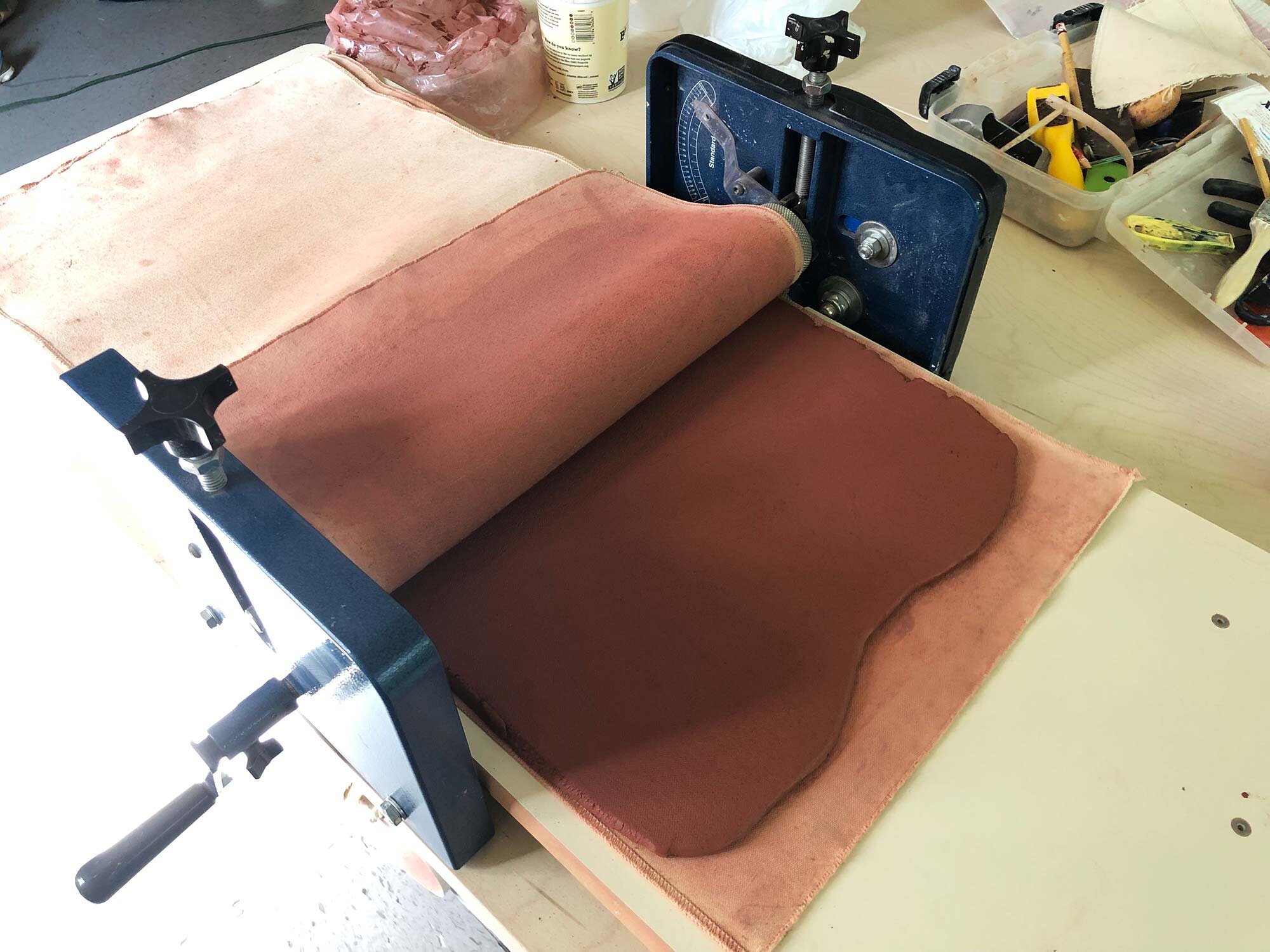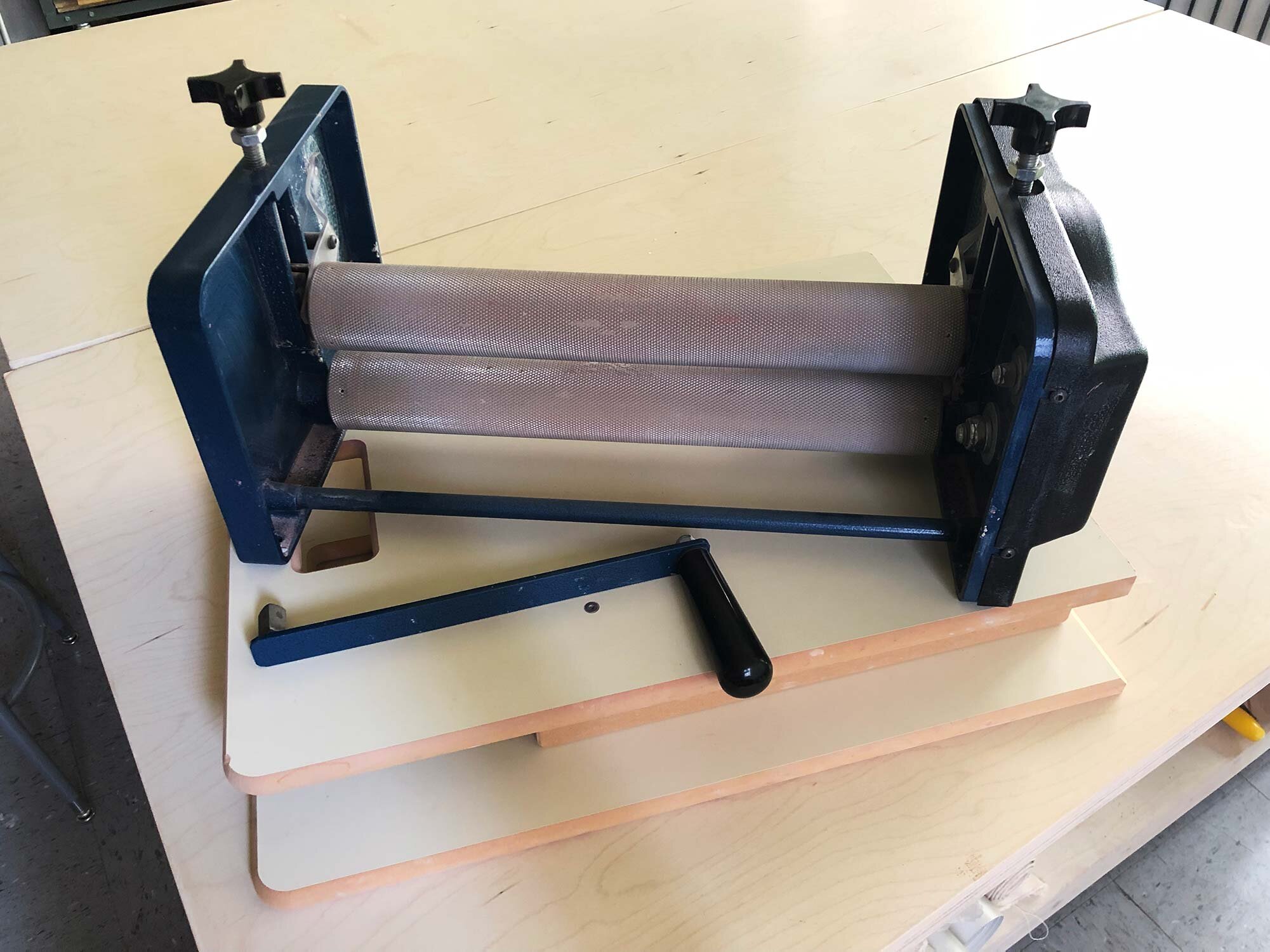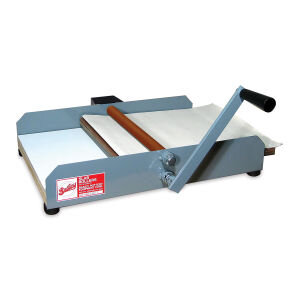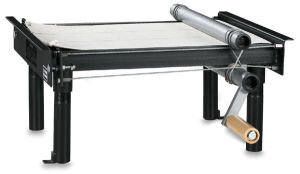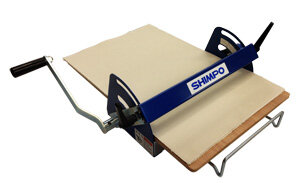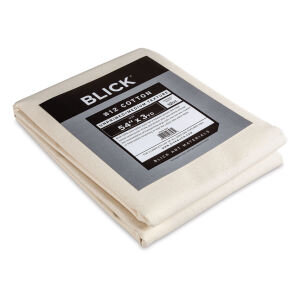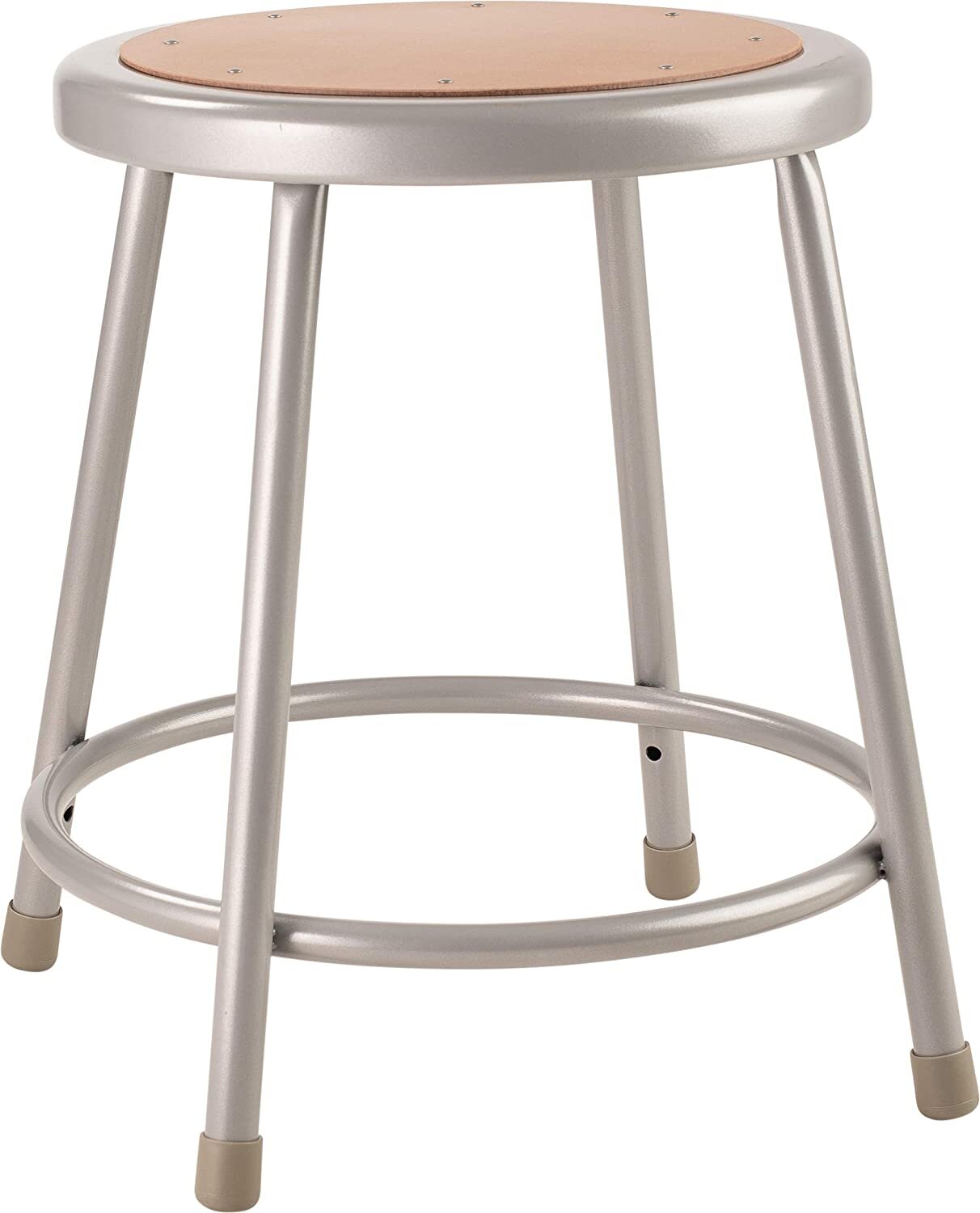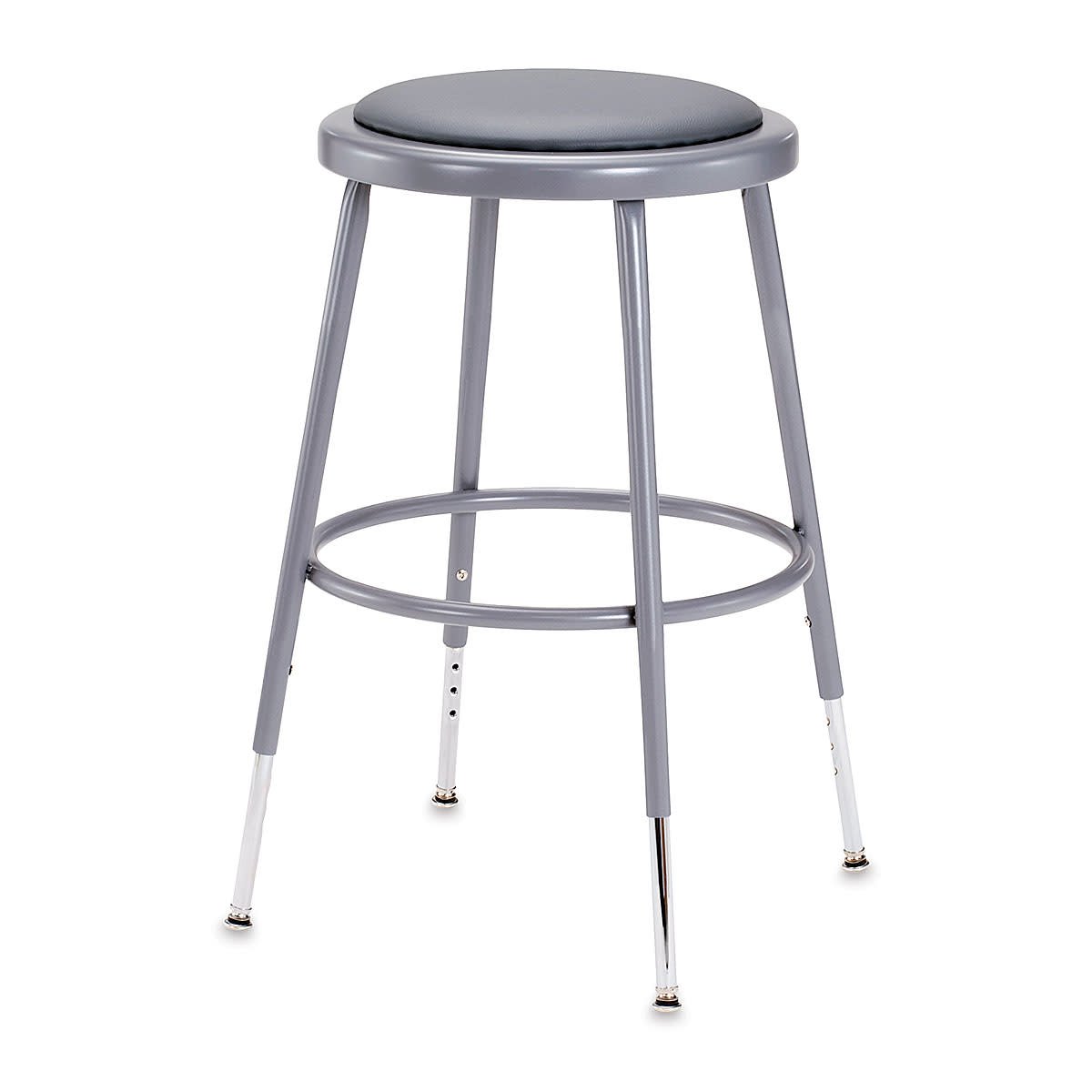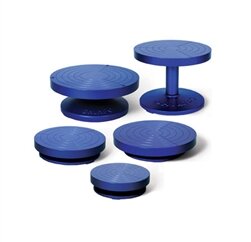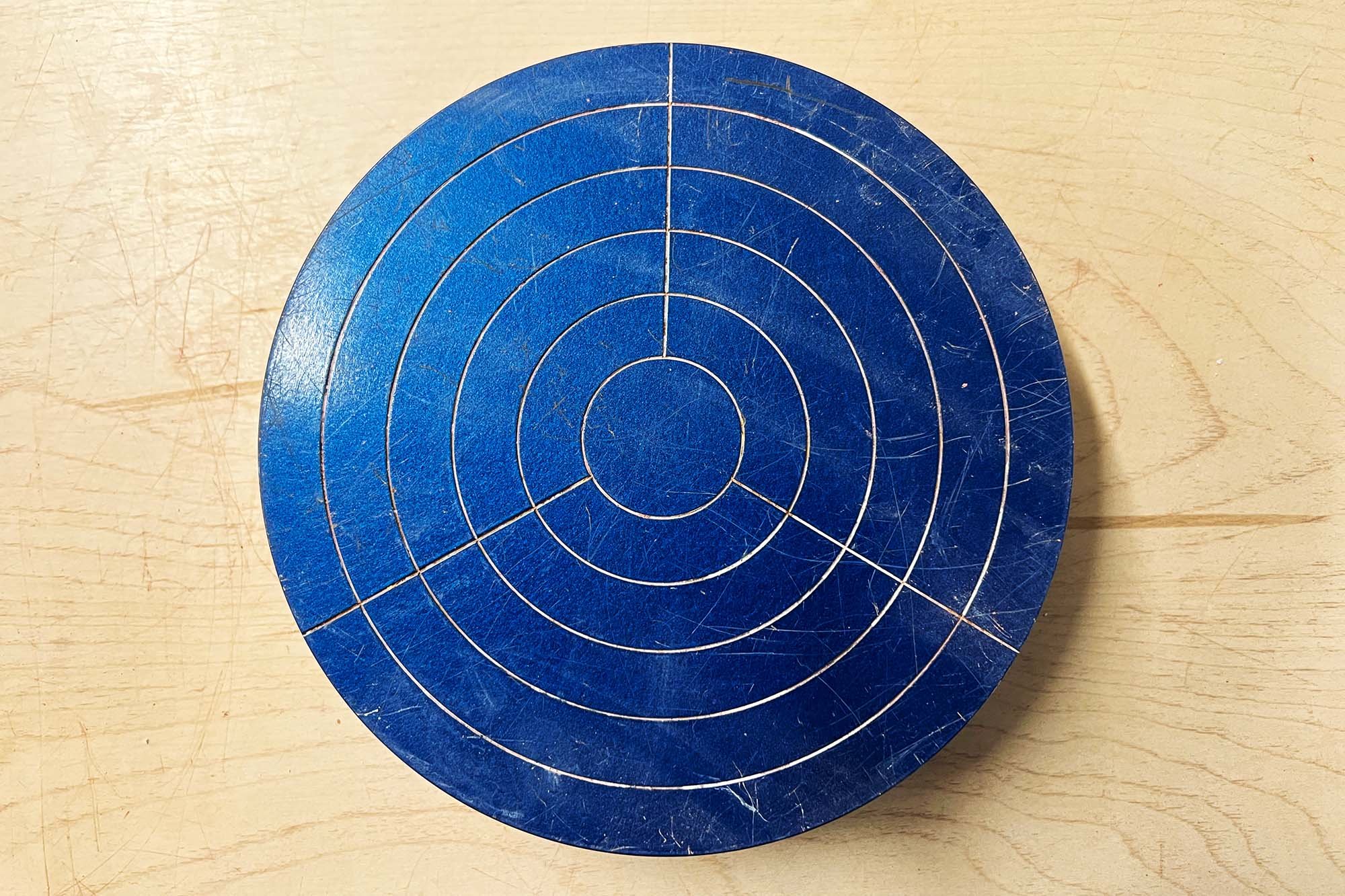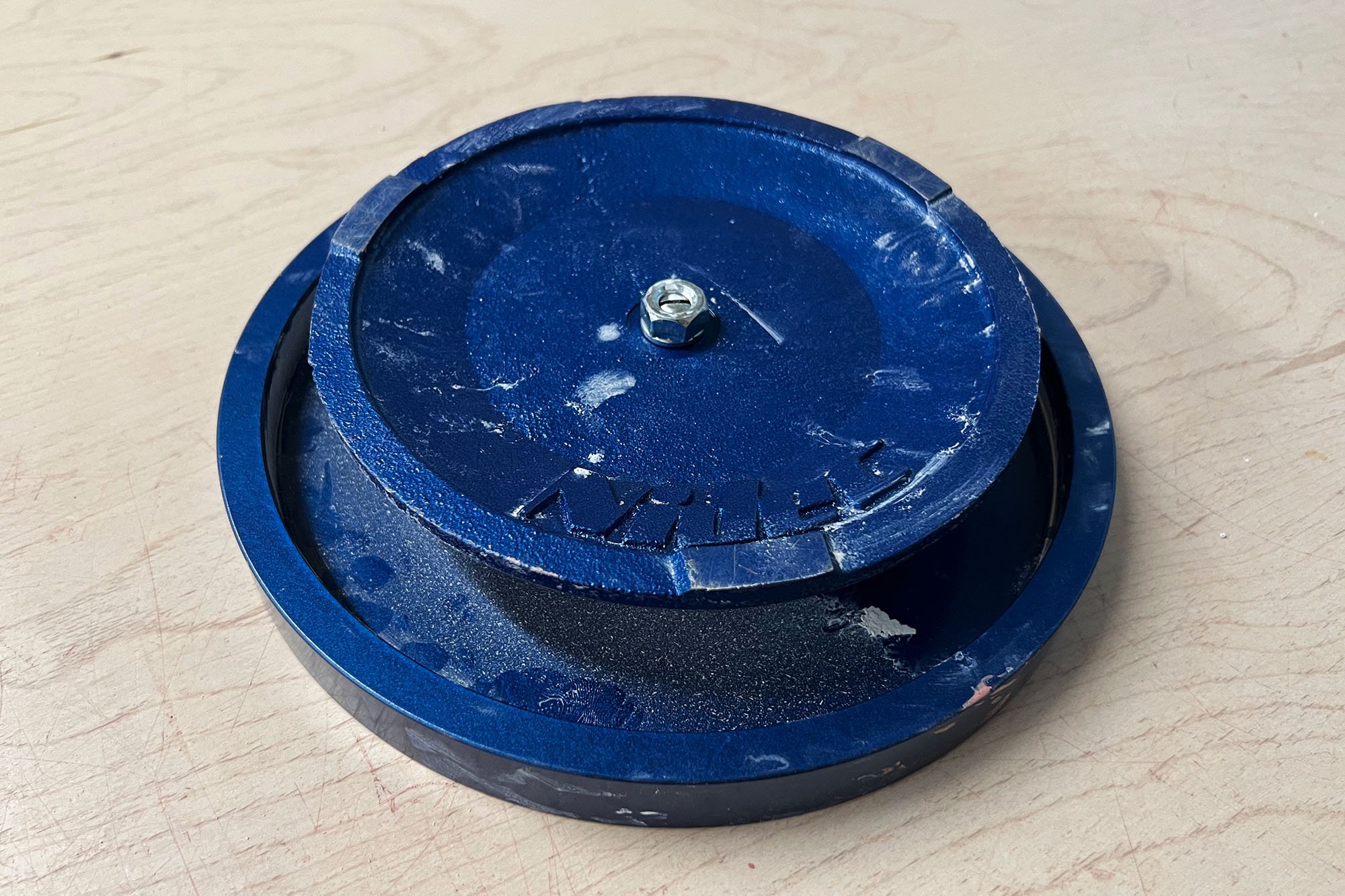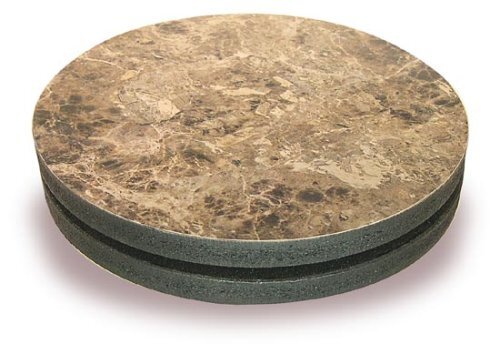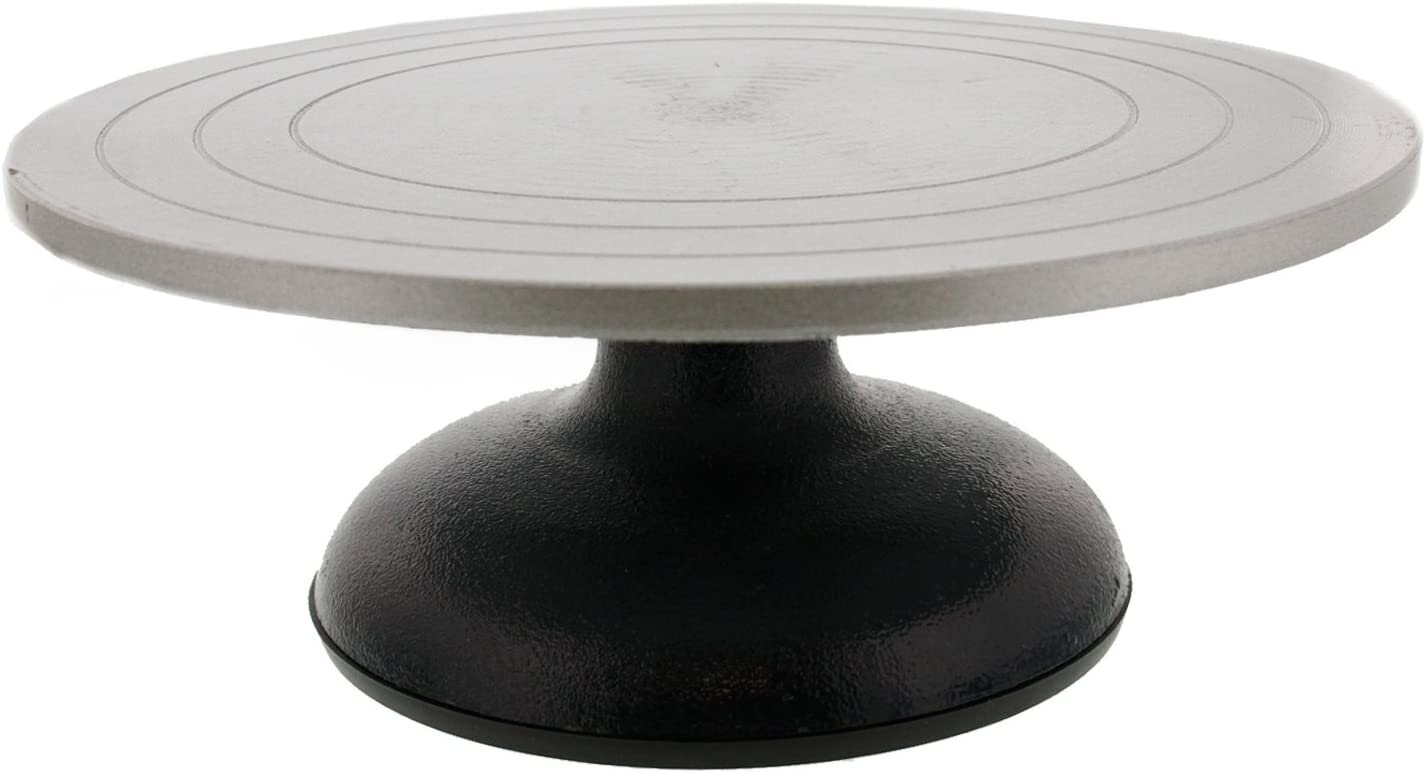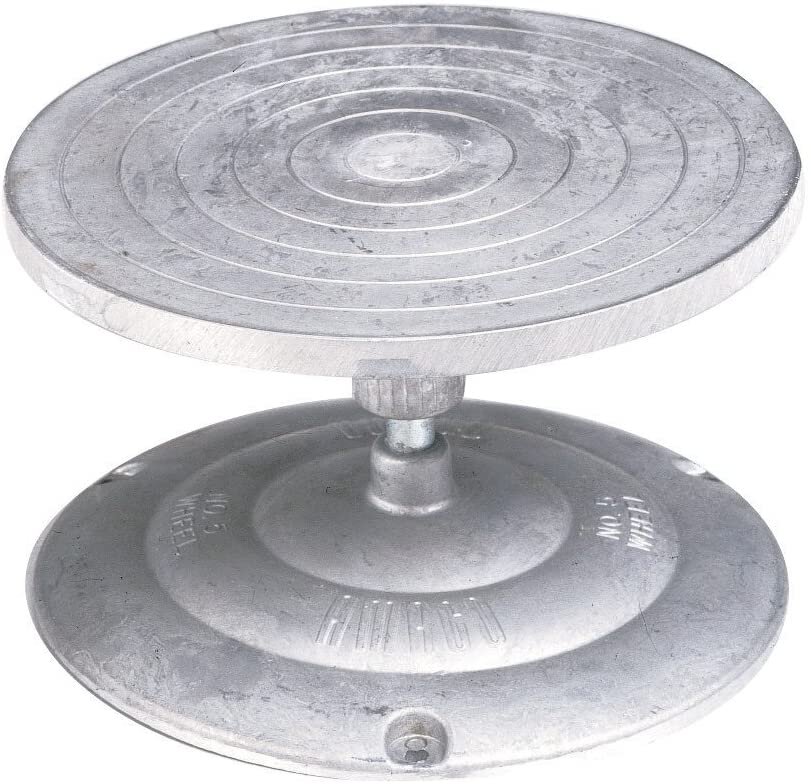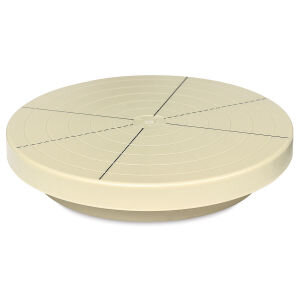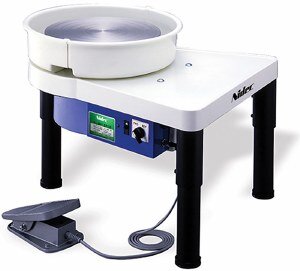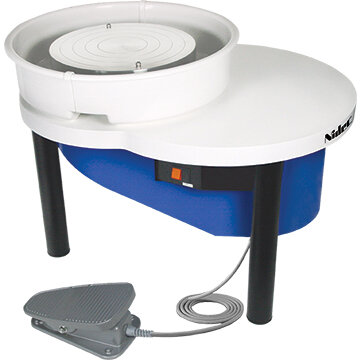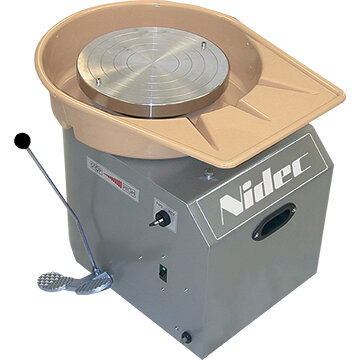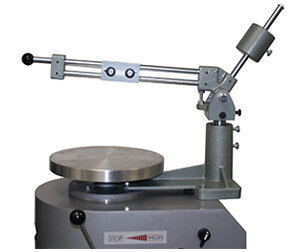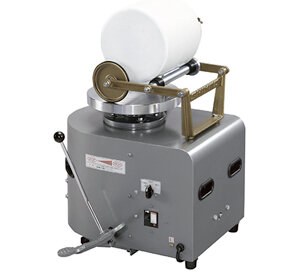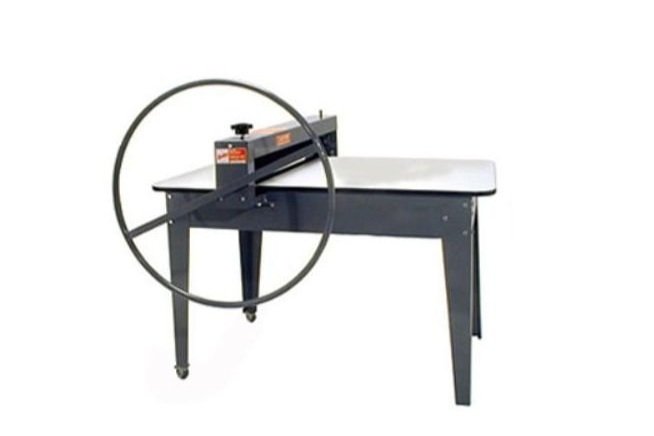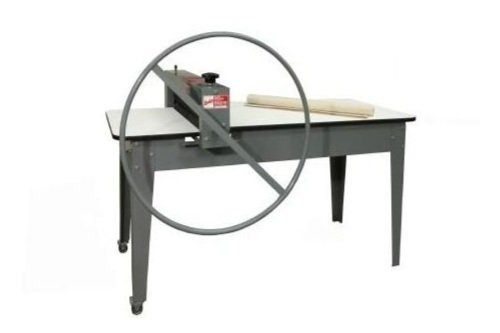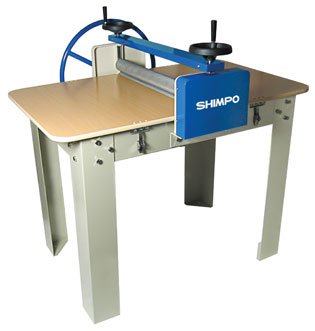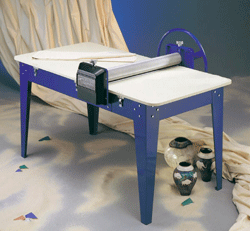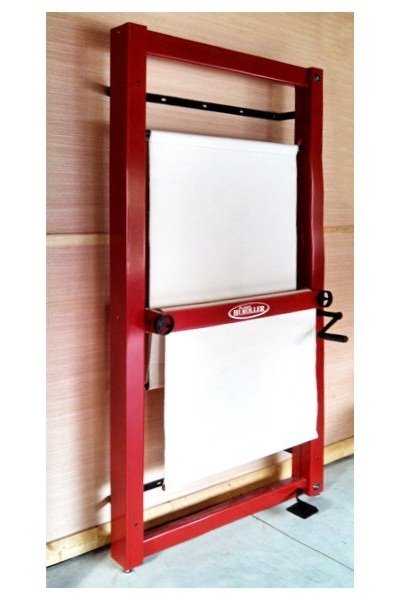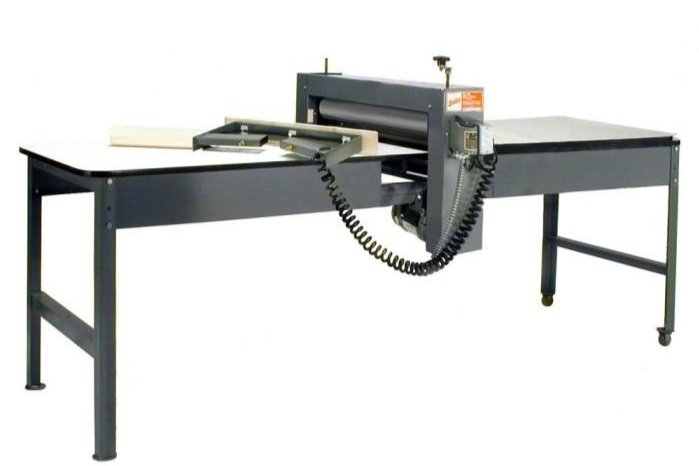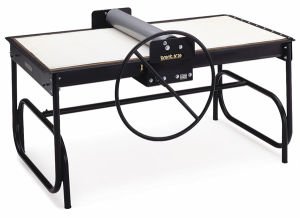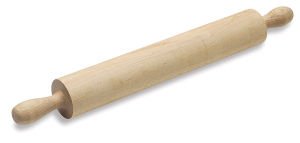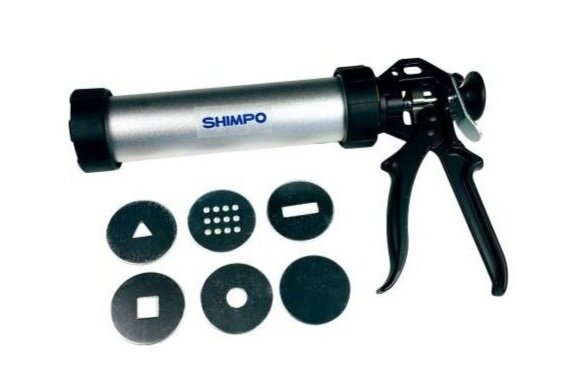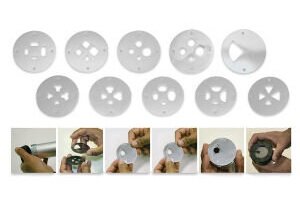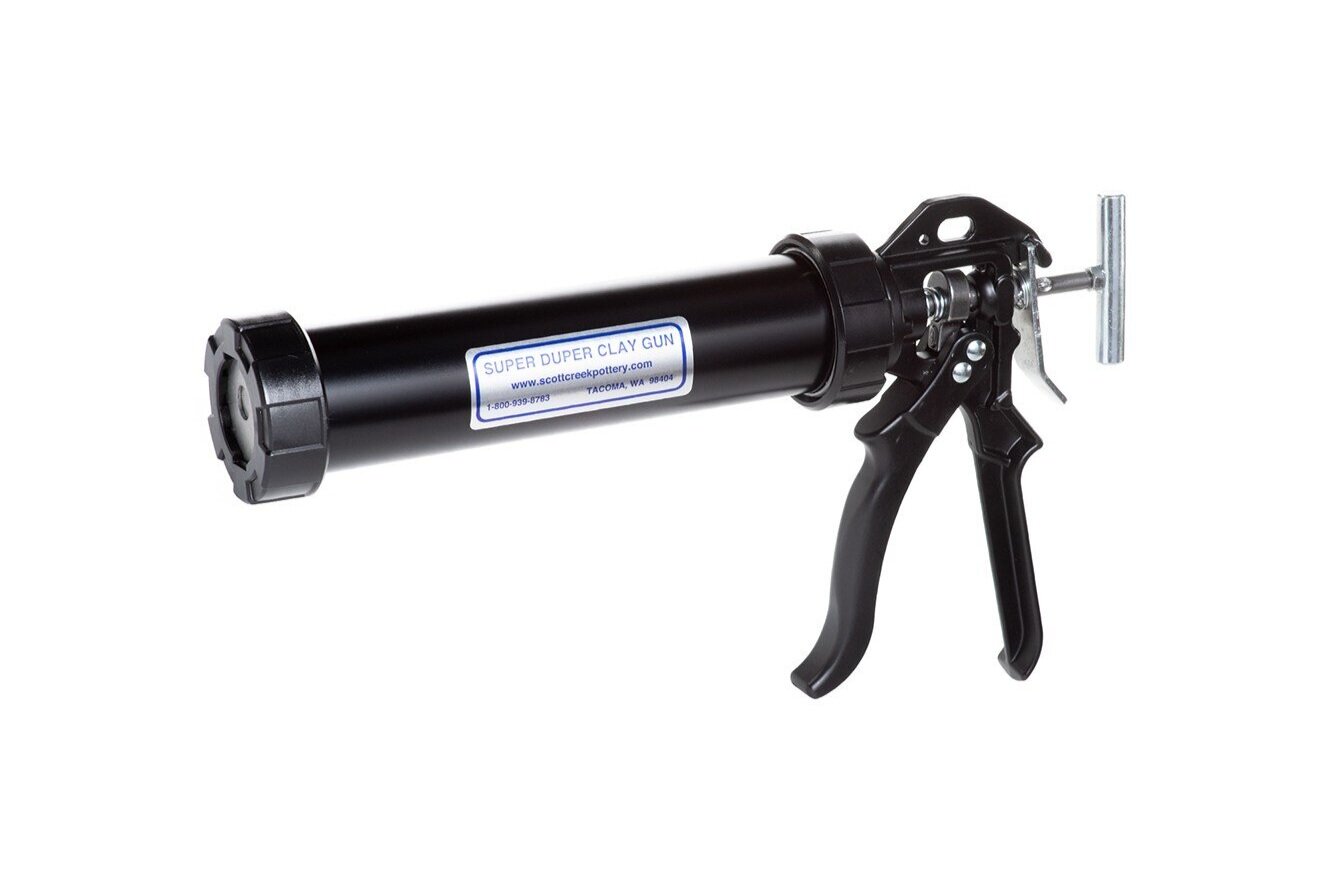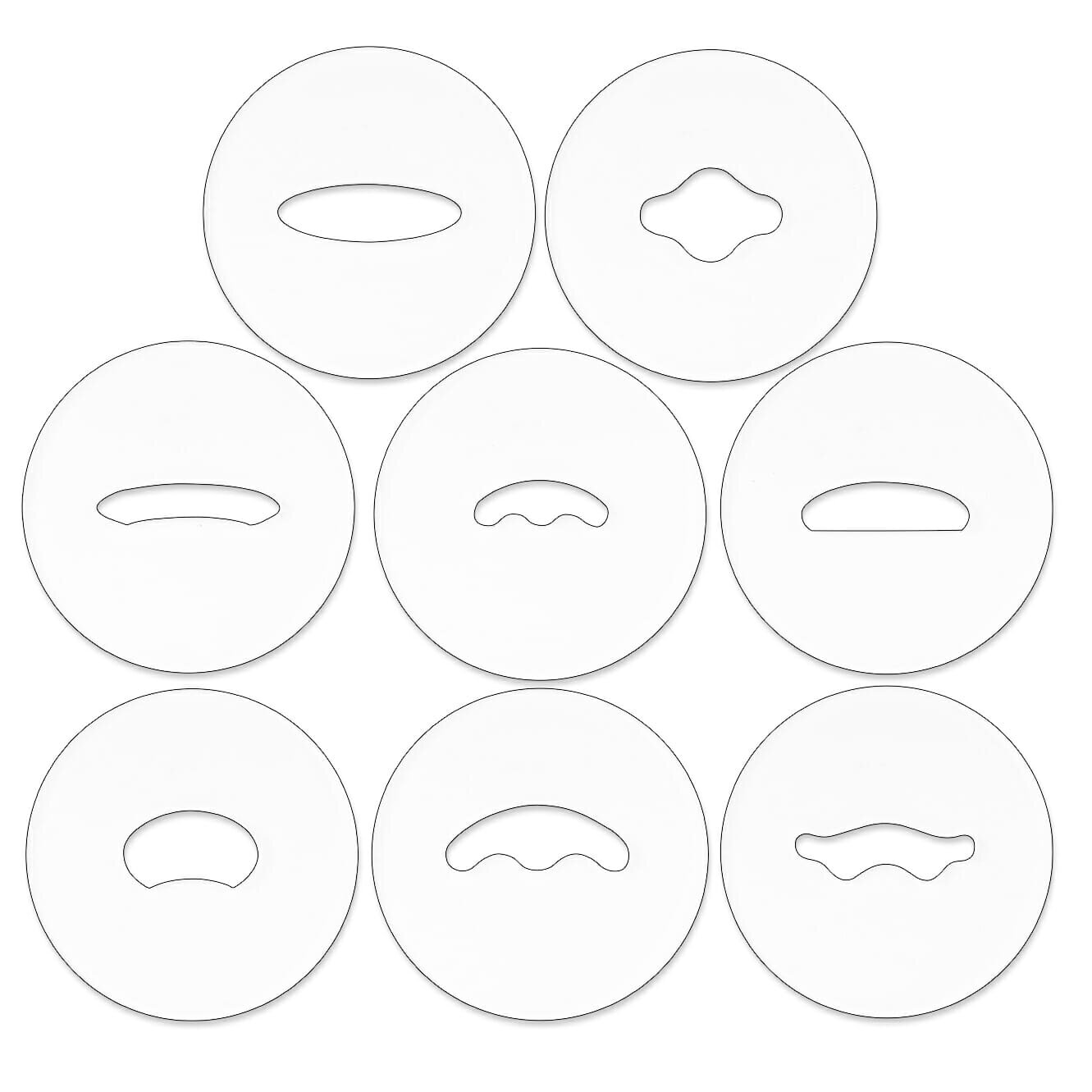Note: Originally published 2021, most recently updated August 2025
A lightweight, compact pottery wheel can be a great option for throwing small to medium sized pots, and are priced more economically priced than full-size wheels, generally in the $300 to $550 range. Table top wheels are especially great for at home use, occasional classroom use, or if you have a small working space and need to take your wheel out and put it away.
You can get great results with table top wheels, but there are trade-offs in power and other options found in full-size wheels. If portability isn’t your biggest concern, there are also larger wheels that can be used on table tops, and these will be covered below
This guide will cover portable / table top pottery wheels and also review a few of the super affordable “budget” wheels that are lightweight and can be moved around.
The Speedball Artista table top wheel.
Top Pick: Speedball Artista
The Speedball Artista is our top pick for a table top wheel. With an 11 inch wheel head, it’s almost as big as a full size wheel (usually they have 12 to 14 inch wheel heads) and with a 1/3 horsepower motor, it has enough power for small to medium size pots. And it’s light! The wheel weighs in at just 26 pounds.
The Speedball line of wheels. At right is the Artista with the optional leg and foot pedal attachments.
The Artista wheel head has standard 10” bat pin spacing, a hand-controlled speed lever, and a variety of add ons such as a foot pedal and static or folding legs. The wheel comes with a 2 year warranty, and is available in right or left handed models. It is listed at $749 but typically retails for $625 to $650.
The optional legs and foot pedal will add about another $200 to $300 to the total cost, giving you basically a full size pottery wheel. Being able to store all these pieces is great, but if you are thinking of getting all the add ons, you might also look into the full size Nidec Shimpo VL-Lite pottery wheel for around $1,100. But if you need something that you can move around, put away when not in use, and set up in a variety of places, then the Speedball Artista is great option. It’s also a great wheel for kids, hobbyists, or something that you can add to the corner of a classroom or home studio.
Speedball Artista Portable Pottery Wheel
List price: $749, but typically retails for $625 to $650
Available in left and right handed models
For more on portable and table top wheels, please keep reading below.
Table of Contents
Speedball Artist Portable Wheel
Shimpo Aspire Portable Wheel
Shimpo VL-Whisper
U.S. Art Supply Table Top Wheel
Other Lightweight Wheels
Comparison Chart
Summary
Nidec-Shimpo Aspire Table Top Wheel
The Shimpo Aspire table top wheel, pictured here with the hand lever.
The Shimpo Aspire pictured with the optional foot pedal.
The Aspire is Nidec-Shimpo’s table top option, with a 1/3 horse power, belt-driven 7 inch wheel head. It is rated to a 20 lb centering capacity, and the wheel has a max speed of 230 rpm via the hand lever, and up to 250 rpm if controlled by the optional foot pedal. The whole unit weighs 31 lbs, making it relatively easy to put away on a shelf or closet when not in use.
The main drawback of the Aspire is that it has a small, 7 inch wheel head. There are a variety of bats and attachments designed for this wheel, but overall it feels more like a toy while the Speedball Artista feels like a portable version of a professional wheel.
The Aspire costs about the same as the Speedball Artista. It’s listed at $690 but typically available around $600 for the hand lever option, or more if you choose to add a foot pedal. The Aspire does not have optional legs.
Overall, this is a quality machine that might be the right wheel for your situation, but it is on the small side.
Shimpo VL-Whisper
With the legs removed, the Shimpo VL-Whisper makes a great table top wheel.
The Shimpo VL-Whisper is our top-rated full-size wheel and is also a great option for table top use. While not exactly “portable” due to the weight, it has a flat design that can sit on a table top when the legs are removed. If you want a table-top or standing wheel with all the bells and whistles of a top-of-the-line wheel, this is a great option.
Rather than a motor and belt, the VL-Whisper is driven by a virtually silent series of magnets that spin the wheel.
The VL-Whisper (VL stands for velocity) has a 1/2 horse power motor, a 14” wheel head, a reversible switch, and can center up to 100 lbs. At around 135 lbs, it is heavy, but it’s a sturdy machine with the quietest motor on the market. It has a unique magnet-driven wheel which is virtually silent and is the reason it can sit flat as there is no traditional motor hanging below the wheel head. At a typically price of $1,825, it hits that sweet spot of great performance and options, while being in about the middle of the price range for full size wheels.
But once again, the decision is do you need a lightweight, portable wheel or a heavier but still great table top wheel.
U.S. Art Supply Table Top Wheel
Another option is the U.S. Art Supply 3/4 HP Table Top pottery wheel. It is sort of a hybrid of the Shimpo Aspire and Speedball Artista as it is a total unit that weighs around 43 pounds and it has an 11” wheelhead with a proprietary 3-pin bats,. It can go forward and reverse, tops out at 300 rpm, has a foot pedal, and retails for $400. (This model used to retail for around $600 so it has somehow dropped quite a bit in the past few years.)
The reviews on this wheel are really mixed. Some people love it and have had great success, recommending it for beginners or intermediate potters. Some say it wobbles but others describe it as quite sturdy. In general, everyone agrees that the splash pan is not the best. With a one-year warranty, it’s a bit of a risk compared to the Speedball Artista but with the new lower price, it is worth a second look for a small table top wheel.
Other Lightweight Wheel Options
In recent years, a number of very affordable wheels in the $200 to $300 range have popped up on Amazon and other places. A variety of pottery influencers have reviewed these wheels on YouTube and found them ok for very small pots, and I can attest that some of my students have tried them and liked them. But if you go this route be aware that there are some limitations, including very limited service and support if anything breaks, weak motors, small wheel heads, and no holes for bat pins if you want to start throwing more adventurous or wider forms. But if you want to try out pottery at a budget price, these may fit the bill for that. Do your research as many of these are available in a variety of permutations and generic options online.:
Vevor 11 inch pottery wheel
At $189, this little nugget of a wheel seems to be about the absolute cheapest you can go. It’s got an 11 inch wheel head and the legs are about 8 inches tall, along with a small foot pedal. In total, it weighs around 40 pounds.
With a wheel like this, you can throw up to 5 pounds of clay but there are tons of things you can make with just a pound or two of clay. If you want to try out wheel throwing, this might be the most entry level you can go. Just don’t expect it to last too long under heavy use.
VivoHome 28 cm / 11 inch Wheel
The VivoHome 28 cm wheel and tool kit.
Another budget option is the VivoHome 28 cm wheel. Rather than 3 legs, it has a boxy unit feel along with a detachable foot pedal. I am recommending this one because while the unit is so small and low, the detachable foot pedal will allow you to raise the wheel a bit (with blocks?) while keeping the foot pedal on the floor. The models with the attached foot pedal look too small for an adult to use.
This Vivo Home wheel weighs almost 28 pounds and retails for $149 but it does come with a variety of tools.
Table Top Pottery Wheel Comparison Chart
Below is a chart with all the wheels mentioned in this post.
Table Top Pottery Wheels
Click the model name to shop at Dick Blick or Amazon.| Model | Typical Price | Motor (HP) | Wheelhead Diameter |
Bat Pin Diameter |
Reversible | Dimensions | Weight | Speed (RPM) | Warranty | Capacity |
|---|---|---|---|---|---|---|---|---|---|---|
| Speedball Artista | $625 | 1/3 HP | 11" | 10" | No, but available as R or L handed | 24 x 18 x 9" | 26 lbs | 0-220 | 2 years | 25 lbs |
| Shimpo Aspire | $590 | 1/3 HP | 7" | 6" | No | 14.5 x 20 x 9" | 31 lbs | 0-230 hand, 0-250 foot pedal | 5 years | 20 lbs |
| US Art Table Top | $400 | 3/4 HP | 11" | Custom 3 pin design | Yes, switch | 17 x 26 x 13" | 42.3 lbs | 0-300 | 1 year | 25 lbs |
| VL-Whisper | $1,825 | 1/2 HP, 400w | 14" | 10" | Yes, switch | 23.2 x 27.5 x 22.75" | 122 lbs | 0-250 | 5 years | 100 lbs |
For a comparison of all types of wheels including full size wheels, click here.
And for our buyer’s guide to full-size wheels, click here.
Summary
Table top pottery wheels are great options for a wide variety of potters. This post has covered a variety of portable and table top wheel options, with our top pick being the Speedball Artista wheel for it’s full size wheel head and ability to go from a comfortable sitting down wheel, to table top, to being packed away on the shelf.
But there are other options out there to suit every type of potter and studio. What table top pottery wheels do you prefer? Let us know in the comments.
